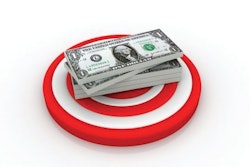
That is a tough question to answer with full information, it's even tougher when you don't understand where your income is coming from.
Your Rewards
Let's break the rewards into financial and non- financial. Your financial rewards are:
1. Your salary
2. Your business' profits
3. Your tax savings
Your non-financial rewards include:
1. Independence.
2. Freedom to do the work you choose.
3. Setting your own hours.
4. Letting other people do the tasks you don't like.
5. Spending a lot of time with your family.
6. The thrill of succeeding.
7. The thrill of helping others (your employees).
We will table the non-financial rewards discussion for a future article. The financial rewards are what I wanted to chat with you about today. Specifically, I want to show you how to determine how much each component is rewarding you.
But first, a nod to the risks.
Your Risks & Costs
The potential risks of owning a business and costs seem almost limitless:
1. Personal bankruptcy (just check the statistics!).
2. Extreme stress.
3. Long hours away from your family.
4. Missing out on important moments in your children's lives.
5. Poor health (no time for exercise).
6. Lawsuits.
7. Accidents.
8. Depression (due to pending failure).
9. Isolation - no one to help you shoulder the load!
The Trade-Off
Everything in life is a trade-off between risk and reward. The trick is to position yourself so that the trade-off is significantly in your favor.
You can do that by increasing the rewards, minimizing the risks, or by doing both (ding, ding, ding - we have a winner!).
Before you think I'm going to give you THE benchmark trade-off be aware that the trade-off differs for each of us. Different personalities enjoy or despise stress significantly more or less than others.
For example, successful entrepreneurs love the rush of pulling off a business success when the odds are stacked against them. Most people freeze in fear over the possibility of losing their job. They don't stomach risk well enough to own their own business.
Regardless of where you fall on the spectrum of risk tolerance, you MUST know how to calculate your financial rewards in order to make critical business decisions such as:
- Should you grow your firm by adding overhead and taking on more work?
- Should you down size as you've discovered the net income was more attractive when the firm was smaller?
How to Calculate Your Financial Rewards
STEP NUMBER 1: Determining your WAGE - how much money do you earn as an employee of your business.
Write a comprehensive job description for the work you do. Don't forget your money management tasks, your hiring tasks, and your sales tasks. If you work in the field, create a second job description for that effort.
If you DO work in the field, determine how much you'd have to pay another working foreman to get you out of the field.
Now, determine how much you'd have to pay an executive to perform your management tasks. Allow for a realistic profit bonus in that estimate. Anyone capable of running your firm profitably will demand a salary plus bonus.
Add the two numbers together and you just calculated your WAGE.
STEP NUMBER 2: Determine your investment return.
Sadly, after running the first calculation, many contractors discover they aren't making a return on their investment. This is called "owning a job." That's not the goal!
We are going to go with a simple method of determining your return on investment. Financial types would wrist slap me for not calculating "properly" but who cares what those stuffed shirts think anyway, right?
Take last year's income statement and enter the data into a spreadsheet. We need to make a few adjustments.
1. Increase the payroll by the difference of what your wage really was (step 1) minus what you were paid.
2. If your Income Statement was cashed based, adjust the stated sales by the amount of sales you deferred to this year and subtract the sales that were deferred from the previous year.
3. Do the reverse with your expenses. Add back the expenses you prepaid at the end of the previous year and subtract the expenses you paid at the end of last year.
4. Work through your overhead line items and subtract out the amounts that were actually personal. (Who's kidding who here? - Everyone has them in there.)
5. If you have separated your equipment into another company, roll that income statement into the one for your business side.
6. Calculate your net income.
There's your REAL business income. That's how much you would make if you hired someone to do all of the work for you.
When that number gets to the point it provides a little more than the lifestyle you want, you will be ready to think about freeing yourself from the daily grind of the business.
To determine your return on your investment, divide your business income by the amount of capital you've invested in, or left in, the business to date.
STEP NUMBER 3: Determine your tax savings.
The simple truth of the matter is that the U.S. government has set up the tax code to benefit business owners and punish employees.
If you doubt that statement, read Rich Dad, Poor Dad by Robert Kiyosaki and Sharon Lechter. It sure opened my eyes and will probably open your eyes. It's the best personal financial management book I've come across.
Okay, back to our task, calculating your tax savings. This is quite easy to do. Get a list of the items you're allowed to deduct because you own a business that you wouldn't be allowed to deduct if you didn't.
For example, your tax preparation is fully deductible through a business. Your truck is significantly or completely deductible where it wouldn't be deductible if you were employed by someone else. Work down the list and add them all up.
Now you know your tax savings.
Do the Rewards Outweigh The Risks? They'd better! If not, redesign your business so that they do.


















